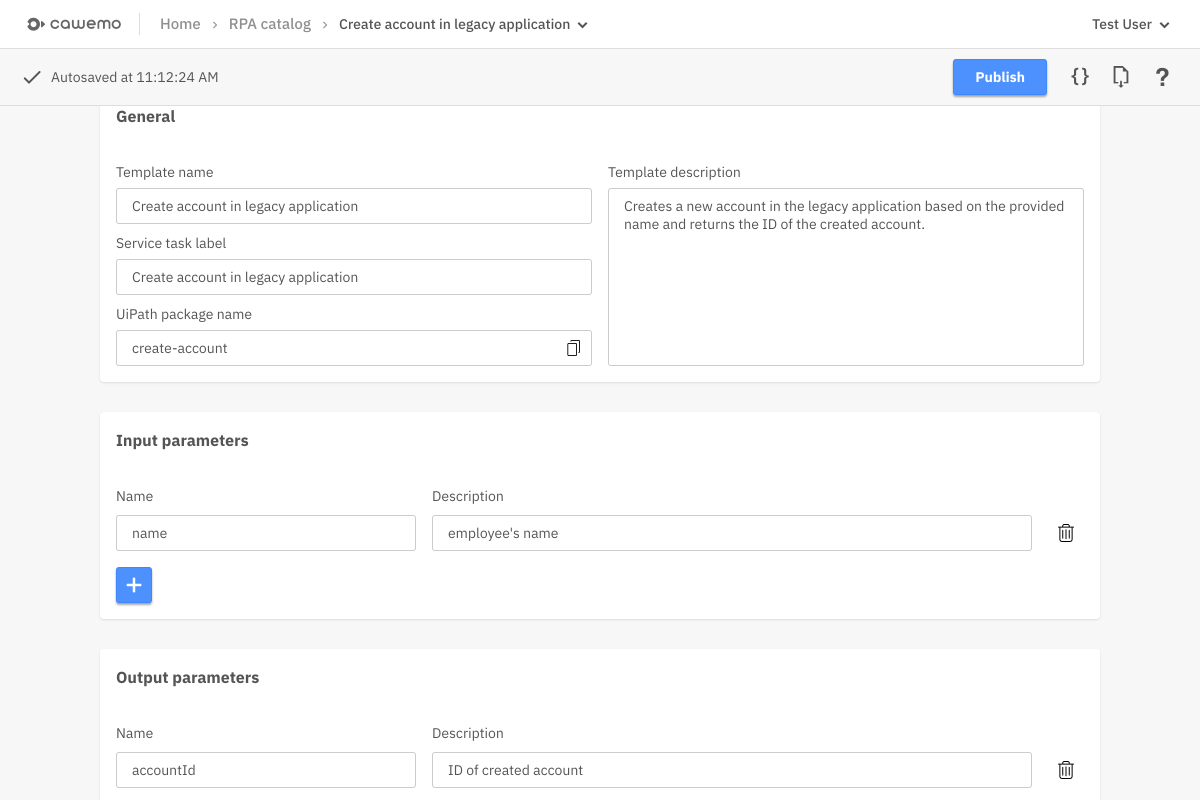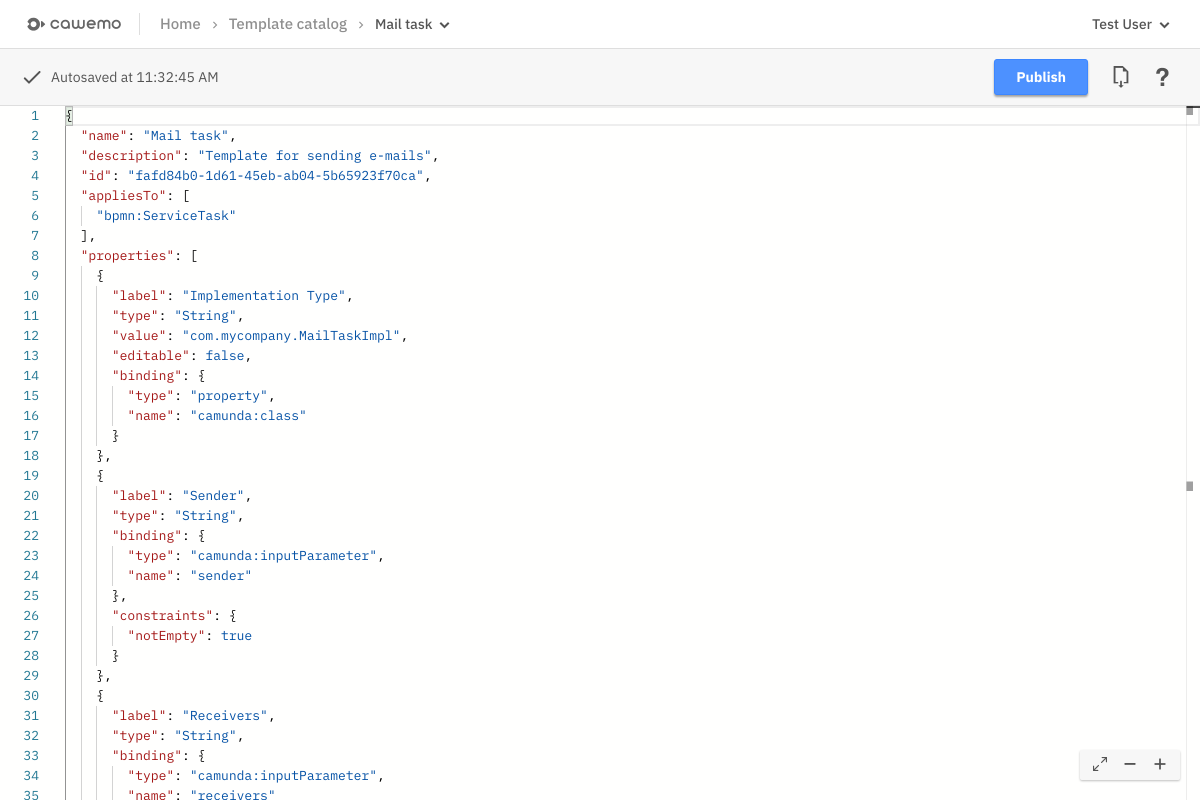Templates
Heads Up!
Catalog projects and templates require a valid Enterprise license.
This view is used to display and edit a template. Templates can be synchronized with a local Camunda Modeler instance and can be used to predefine properties for BPMN elements like service tasks.
Only the catalog project owner can edit or delete a template, while all other organization members have read-only access.
You can delete, duplicate, or rename a template via the dropdown menu in the breadcrumb navigation.
Template Types
Cawemo currently supports two types of templates:
- UiPath templates are specifically intended to trigger a UiPath script from a BPMN service task via the Camunda RPA Bridge. For them, Cawemo includes a form-based editor.
- Generic JSON templates are general purpose templates not bound to a specific use case. New templates are created with a default content that you can extend or override. The default values give you a hint on what content needs to be added for each property. Read more in our documentation about templates.
UiPath Template Editor
The UiPath template editor provides a form in which you can easily define the required parameters like the UiPath package name or the IN and OUT arguments of the UiPath script. In the background, Cawemo ensures that a valid template JSON is produced and offered to the Camunda Modeler user. You can also inspect the generated JSON by clicking the “Show Code Editor” button in the upper right corner.

Please note: If you start editing the JSON code of a UiPath template, it will be converted to a generic template and the form editor can no longer be used for it.
Code Editor
The code editor assists you in writing templates in JSON text format. It has syntax highlighting, validation, keyboard shortcuts, and more. Templates are saved automatically after every content change if you have typed in valid (syntactically correct) JSON.

Publishing and Version History
Before a template can be used in the Camunda Modeler it needs to be published once by clicking the “Publish” button in the upper right corner. If you like you can provide a name for the published version. In case you need to adjust your template later on, you can simply publish a new version of it. The version history, available from the breadcrumb menu, shows all published versions and allows you to keep track of the changes.
Import / Export
You can override a template’s content by dragging and dropping a JSON file from your local file system onto the code editor. You will be asked to confirm the upload since the changes are permanent and not revertable.
The template can be exported as a JSON file by clicking on the export icon in the upper right corner.